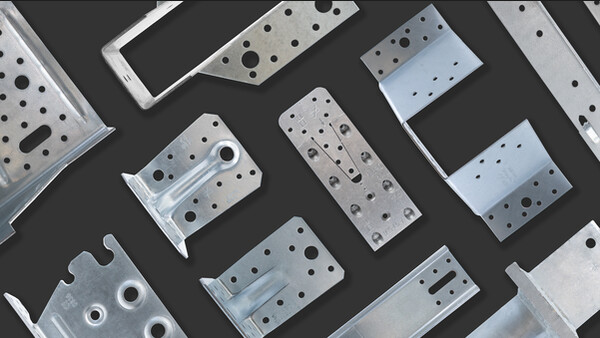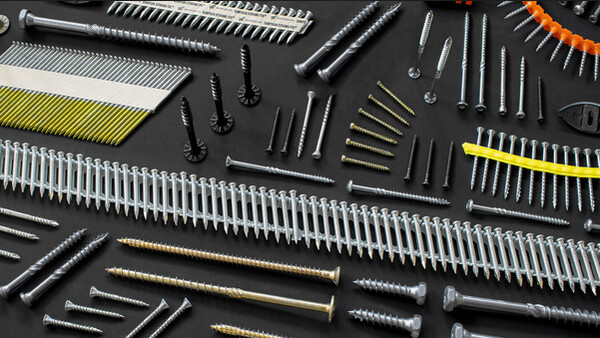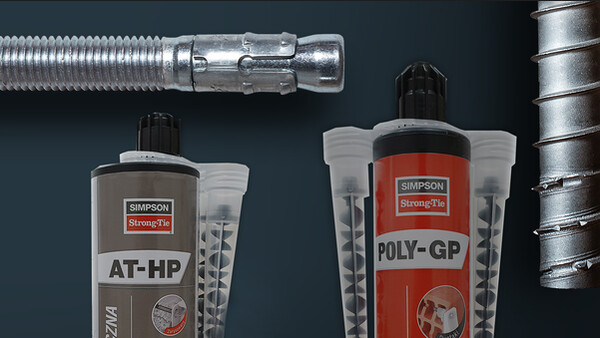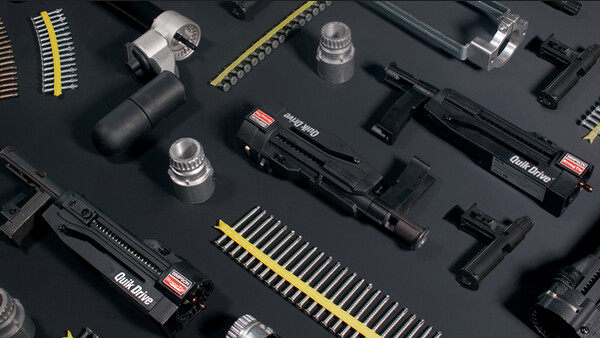Understanding corrosion
Many environments and materials can cause corrosion, including ocean salt air, fire retardants, fumes, fertilizers, preservative-treated wood, de-icing salts, dissimilar metals and more. Metal connectors, fasteners and anchors could corrode and lose load-carrying capacity when installed in corrosive environments or when installed in contact with corrosive materials.
When corrosion is caused by airborne solutions (ocean air, swimming halls, spray from a salt-treated streets in winter, etc.) the metal parts can be in environments that are directly exposed to rain. They can be covered by a roof or inside the ventilated area of a façade.
The many variables present in a building environment make it impossible to accurately predict if, or when, corrosion will begin or reach a critical level. This relative uncertainty makes it crucial that specifiers and users are knowledgeable of the potential risks and select a product suitable for the intended use. It is also prudent that regular maintenance and periodic inspections are performed, especially for outdoor applications.
It is common to see some corrosion in outdoor applications. Even stainless steel can corrode. The presence of some kinds of corrosion, e.g. white rust on zinc, does not mean that load capacity has been affected or that failure is imminent. If significant corrosion, e.g. red rust, is apparent or suspected, then a qualified engineer or inspector should inspect the framing members, fasteners and connectors. Replacement or cleansing of affected components may be appropriate. Red rust corrosion of steels will mostly carry on increasing and will cause major damage at an advanced stage.
Due to the many different chemical treatment formulations, chemical retention levels, moisture conditions and regional formulation variants, selection of coatings has become a complex task. We have attempted to provide basic knowledge on the subject here, but it is important to fully educate yourself by reviewing information, literature and evaluation reports published by others.
It is important to select the fastener coating so that it fits with the connector coating to avoid to decrease performance of the connection.
This document does not include information or guidance related to fire retarded timbers.
Galvanic corrosion
Galvanic corrosion (also known as bimetallic corrosion, dissimilar metal corrosion or contact corrosion) may occur when dissimilar metals (e.g. galvanised mild steel and stainless steel) are in contact in a corrosive electrolyte (e.g. water containing salt, acid, etc.). When a galvanic couple forms, one of the metals in the couple becomes the anode and corrodes faster than it would all by itself, while the other becomes the cathode and corrodes slower than it would alone. For galvanic corrosion to occur, three
conditions must be present:
1. Electrochemically dissimilar metals must be present,
2. These metals must be in electrical contact,
3. The metals must be exposed to an electrolyte.
The relative nobility of a material can be predicted by measuring its corrosion potential. The well-known galvanic series, see below, lists the relative nobility of certain materials in seawater.
Large ANODE (Carbon Steel) area, small CATHODE (Stainless Steel fastener) area showing no attack on the fastener and relatively insignificant attack of carbon steel.
Large CATHODE (Stainless Steel) area, small ANODE (Carbon Steel fastener) area showing no attack on the stainless steel and relatively increased attack of fastener.
Good to know : When low-alloy steels in high moisture atmospheres are in contact even with small carbon steel particles, bimetallic corrosion can cause a nucleus for a stainless steel corrosion. This might happen e.g. when stainless fasteners are processed with non-stainless tools.
Corroded end (anode)
- Magnesium, Magnesium alloys and Zinc
- Aluminium, Cadium, Iron and Steel
- Lead, Tin, Nickel and Ni-Cr alloy
- Brasses, Copper and Cu-Ni alloys
- Nickel
- Stainless Steels
Protected end (Cathode)
The relative nobility of a material can be predicted by measuring its corrosion potential. The well-known galvanic series, (see right) lists the relative nobility of certain materials in seawater.
A small anode/cathode area ratio is highly undesirable. In this case, the galvanic current is concentrated onto a small anodic area. Rapid thickness loss of the dissolving anode tends to occur under these conditions.
Adverse area ratios are likely to occur with fasteners at joints.
Carbon steel fasteners used with stainless steel connectors should be avoided because the ratio of the area between the stainless steel to carbon steel is small and the fasteners will be subject to aggressive attack, thus greater corrosion. Conversely, the rate of attack of a carbon steel connector secured by a stainless steel fastener is much slower.
Prevention of bimetallic corrosion is possible by excluding an electrolyte from the connection by painting or taping over the joint .Alternatively, the two metals should be isolated from each other by painting each contact surface or using a non-metallic isolation material, typically nylon, neoprene or Teflon washers, pads, gaskets or bushes depending upon the particular application.
It is sometimes hard to give general statements on certain materials (e.g. Aluminium) as the appearance of certain ingredients in the certain alloy (e.g. Copper) has a major impact on the corrosion resistance in presence of certain electrolytes (e.g. de-icing salt). In addition, the post treatment (e.g. Eloxation) makes a big difference on the corrosion resistance. Especially when low-alloy steels in high moisture atmospheres are in contact even with small carbon steel particles, bimetallic corrosion can
cause a nucleus for a stainless steel corrosion. This might happen e.g. when stainless fasteners are processed with non-stainless tools.
Stainless steel in swimming halls
In the past there has been some uncertainty about the correct choice of stainless grades to be used for load bearing members in swimming halls. Since the publishing of EN 1993-1-4 :A1 in 2015 designers have a clear and easy guidance to select the correct material based on the latest state of art.
The atmosphere of indoor swimming pool buildings is one of the most aggressive environments to be found in building applications. Chlorine-based disinfectants react with contaminants introduced by bathers to produce chloramines which, when contained in vapour from the pool water, can condense onto the stainless steel components and are considered to be the most important factor in the corrosion of stainless steel in a swimming pool environment.
EN 1993-1-4 allows the use of only 3 types of CRC V steels for load bearing members, e.g. 1.4529. For these steels no inspection is required therefore they can be used in unrevisionable areas. An exception to this are accessable building members that are inspected at least weekly. The possible steel grades for this case are given in EN 1993-1-4






